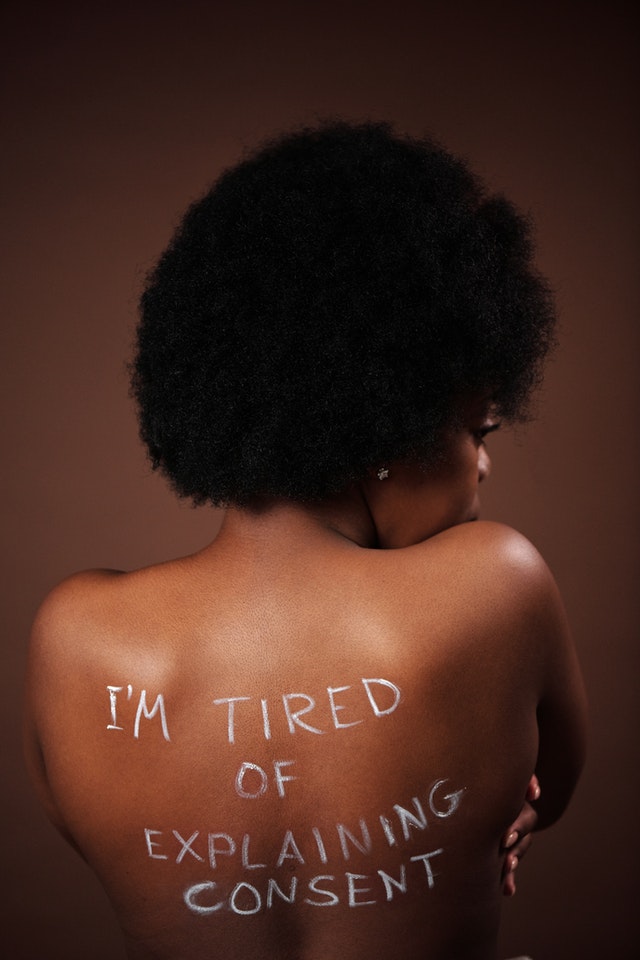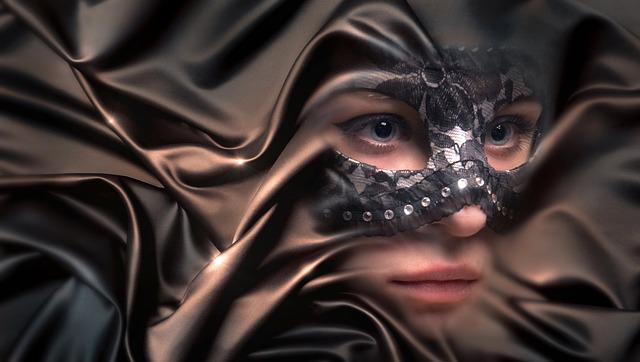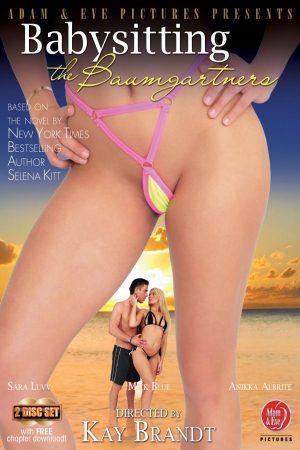 When it comes to writing, I’m influenced by trends, but usually only in a negative way. If everyone is writing Mafia romance, or reverse harem, or billionaire’s babies, or hotwife/cuckold kink, my immediate reaction is to write something that twists the genre so thoroughly that it’s unrecognizable.
When it comes to writing, I’m influenced by trends, but usually only in a negative way. If everyone is writing Mafia romance, or reverse harem, or billionaire’s babies, or hotwife/cuckold kink, my immediate reaction is to write something that twists the genre so thoroughly that it’s unrecognizable.
This doesn’t do much for my sales, of course; someone who’s looking for hunky alpha billionaires and pretty, susceptible virgins is not going to get off on
But I have to admit that I get perverse satisfaction out of torturing tropes. Furthermore, I find the exercise of turning fads on their heads to be an excellent stimulus to the imagination.
I’ve recently noticed a newly popular sub-category of monster erotica. The stories I’ve seen mostly feature big, bad, burly humanoid creatures – orcs, ogres, and the like – who have lots of muscles, enormous cocks and a strong partiality for barely legal girls in short school uniforms. Furthermore, these monsters get their jollies from punishing their sweet little victims as well as screwing them silly. As for the young ladies, well, they’re terrified, but when you’re a teenager you’re also so very horny…
And I have to admit, I’m tempted to try my hand at this sub-genre. I’m pretty sure I could nail it (so to speak), if I took it seriously. I’ve thought about a setting – too many of these take place in high schools, so I’d want something at least a little different – and come up with the notion of a run-down diner somewhere out West, where the cook and owner is an ogre. The heroine will be an eighteen-year-old headed to California, looking for stardom, but marooned on the highway to nowhere. Her old car dies and she’s stuck in the dusty, nearly deserted town, where she takes a job as a waitress to earn money for repairs. I see lots of opportunities for spanking and other chastisement in this scenario, as well as abundant filthy sex, of course.
Of course, this temptation isn’t helping me complete my work in progress, a novel which still has at least ten chapters to be written. Still, I find myself sketching out scenes while I’m swimming my laps, or waiting in line at the bank. If I keep following these lines of thought, I might not be able to resist.
Meanwhile… I thought I’d share a short, tongue-in-cheek tale that involves a monster, and speaks to the question of tropes. Enjoy!
Myonphobia
By Lisabet Sarai
Laurel gazed out at the lake from the cabin porch and released another sigh. A full moon silvered the water. Little ripples murmured as they kissed the narrow beach. A gentle wind stirred the pines. Otherwise, silence reigned. She ran her fingers through her long, blonde locks. Pain knotted under her lush breasts. The night was achingly beautiful, but so very lonely.
Of course, she had wanted solitude. That’s why she’d fled, after Harold’s funeral. Her step children circled like vultures, ready to attack, determined to contest his revised will. She had to get away. Let her lawyers handle them She understood why her husband had cut them out and left his entire fortune to her. He was trying to assuage his guilt, to apologize for his failures. No amount of money, though, could ever compensate for those lost years.
She had always loved this place, buried in the forests of the Upper Peninsula, ten miles from the nearest settlement. “Aren’t you worried, Lauri, up there all by yourself?” her best friend Marissa had asked when Laurel announced her plans. “A woman on her own? What about wild animals? Criminals? Rapists?”
“I’ve got the satellite phone, hon. And the Farleys in the next cabin are barely a mile away. Jim checks by every day to make sure I’ve got everything I need.”
The haunting call of a loon echoed through the stillness A chill shiver ran up her spine. During the day it was easy to forget how alone she was, but at night…
I’m fine, she told herself. There’s absolutely nothing to be afraid of.
A sudden noise arose, as if to contradict her self-reassurance, the crackle and pop of something moving through the underbrush along the shore. Shrinking back into the shadows near the cabin wall, she scanned the thick vegetation. The racket grew louder, snapping twigs and a huff that might have been the breathing of some great beast. A moose? she wondered. A bear?
She gripped the rifle Jim Farley had pressed on her. Laurel had no idea how to use it – what romance heroine would? – but the cold metal under her palm blunted the razor edge of her terror. If I just stay quiet, it will probably go away. She knew she should slip back into the cabin and lock the door, but fear held her paralyzed. Quite simply, she couldn’t move. Standing barefoot on the rough boards, wearing only brief shorts and a tank top – why bother with undergarments when there was no one around? – she’d never felt so vulnerable.
The intruder was close now. She could see the bushes shaking, off to the left. Any instant, it – or he – would burst into the clearing in front of the hut.
She found herself whispering a childhood prayer.
“Ugh! Damn roots!” It was a man’s voice, confident and mature, deep and rich as milk chocolate, with a hint of a drawl that brought back memories from her youth. A decidedly masculine body stumbled out of the brush onto the beach. He pulled himself up to his full height – easily six three or six four – and gazed around him. Broad -shouldered and narrow-waisted, that lithe, powerful form set alarm bells ringing in Laurel’s mind and a current of heat swirling through her body.
No. It couldn’t be.
The interloper peered into the darkness and sniffed the air. All the lights in the cabin were off. He seemed not to see her. He raised his face to the moon.
There was no doubt. She would never forget those perfect cheekbones, that arrogant nose, that chiseled jaw. Moonbeams lit his bottomless blue eyes, making them glow like sapphires. A strangled moan escaped her throat. Her nipples beaded under her thin top and a growing hunger throbbed in her core.
Grant. Grant Steele. The one man she’d ever loved.
“Laurel? Laurel baby! You are here, after all.” In two athletic bounds, he’d scaled the porch and stood towering over her diminutive frame. He was solid, real – this wasn’t one of her eternal fantasies. Without preliminaries, he gathered her into his arms. He smelled of balsam, damp earth and grease from his favorite french fries. The all-too-familiar scent left her limp and increasingly damp.
His firm lips pressed against her, mastering her in an instant. Molten need flooded her as he pulled her more tightly against his rock-hard body. His tongue invaded her mouth and tangled with hers, brazen and insistent. Meanwhile his always-bold hands traced her bountiful curves, kneading her well-toned buttocks and tickling the side of one full, tender breast.
Lightning sparked through her with each of his touches. His massive erection prodded her pubis as he continued to ravage her mouth. All she wanted was to sink to the ground and open herself to him. It took every ounce of will she could muster to push him away.
“Grant – Grant – wait a moment, please!”
“I’ve waited half a lifetime for you, angel. That’s long enough!” Nevertheless he backed off a bit. She pressed her hands against his chest, needing to catch her breath for a moment, to increase the distance between them. If she didn’t, she’d go mad.
Under his tight tee shirt, ridges of unyielding muscle rose and fell under her fingertips, like a bumpy road. She fought down a sudden wave of nausea. “Grant, how did you ever find me?”
Instead of answering, he bent to kiss her again, nibbling at the corner of her mouth, sliding his burning lips along her jaw, sucking on her earlobe until electric sparks sizzled down to her moist center. His hands busied themselves, too, slipping under the waistband of her shorts to cup her bare rear cheek.
The shock of his flesh on hers made her see stars. He kindled delight in every cell of her being, but she had to hold on, at least for a moment. She had to know. She trust her palms against his chest once more, ignoring the shudder that crept through her.
“Grant! Please! Who told you I was out here?”
“Nobody told me. I just knew. You’re my soul mate, Laurel. I always know where you are. Of course, getting to you might not always be that easy.” He glanced a bit ruefully at the biceps bulging out of his short sleeves, which were scratched and raw from fighting his way through the woods, then favored her with one of his irresistible, boyish grins. “But it’s worth it…”
The sight of his torn, pneumatic flesh made her a bit queasy. She ducked away before he could descend on her mouth once more. She wanted him – oh, how she wanted him, with the pent-up urgency of fifteen years apart! But first they had to talk. Communication was important. She wasn’t going to just give herself to him like some slut. She had to know how he felt, why he’d left town so suddenly after that night, so long ago…
Still. His soul mate, he’d called her. Passion flared in her heart and between her thighs. It was too wonderful to be true!
“If you felt that way – why did you leave me – you know, after…”
“After you refused to give me your cherry?”
“Come on, Grant, you know we couldn’t. We were barely seventeen. We were romance characters. It’s just not allowed.”
He didn’t try to disguise the bitterness in his voice. “I ran away from the hurt. I thought I could forget you. That I could bury myself in other bodies and burn out the need.” With a gentleness that almost made her sob, he trailed his fingers through her luminous golden tresses. “And I tried, baby. Believe me, I tried. I whored my way from Mombasa to Bangkok. But you were with me the whole time. Every woman I ever fucked was really you.”
His crudeness made her own desire flare. “Oh, Grant…”
“Then, when I heard your husband had died, that you were a widow now – I had to track you down. To make you give me what you’ve owed me for so very long… what we both need and deserve…”
He seized her with new roughness. “I’m finally going to make you mine, baby.” Her clothing tore like tissue paper under his assault. She sprawled backward onto the porch, bare as the day she was born. The night air, cool on her fevered skin, both thrilled and terrified her.
Her nakedness stunned him for a moment. He gazed at her with something like reverence. “God, you’re beautiful, Laurel! You’re a dream come true.” He dabbled his fingertips in her moist cleft, barely revealed by her gracefully parted thighs. “And so wet, darling! You want me as much as I want you.”
He knelt between her legs and she held her breath. The moment – the moment was coming. But she had to tell him the truth.
“Of course I want you, Grant. I always wanted you, no matter what I said or did. That night up on the hill above town – you have no idea how much I wanted you to be my first. How difficult it was to say no.”
“I should have been.” Anger and regret both rang in his voice. He was fiddling with his jeans, trying to get his zipper open. Laurel held her breath. “But it’s too late now.”
She propped herself up on her elbows, her eyes glued to his fingers. “No, Grant. It’s not.”
“What?” He sat back on his heels to stare at her. “What are you talking about?”
“Harold – he – well, let’s just say that he and I never consummated our marriage.”
“You mean – are you trying to say….” he whispered.
“Yes, my love. I’m still a virgin.”
“Praise the Lord and the saints!” He dragged her back into his arms, kissing her all over. “I can’t believe it. After all this time… Oh, baby, I’m going to make it so good for you, so very good. Just lie back and let me take care of everything!”
With exaggerated care he settled her onto her back once more. Her legs flopped open and her musky aroma pervaded the atmosphere. Never in all her thirty three years had she been so drenched, so aroused, so ready.
Grant gave her a devilish grin. He grabbed the bottom of his shirt and pulled it over his head to reveal his naked torso.
Laurel screamed. Terror drowned out every erotic thought, every lascivious sensation. “No! No! Get away from me!”
The vision before her was more monster than man. Unnaturally smooth, totally hairless skin stretched taut over the swollen contours of his massive pectorals. Puffed-up deltoids merged into the ballooning biceps she’d glimpsed earlier. Ropy veins twisted around the contoured flesh of his arms, like tubing installed to nourish some artificial life form. Below his nipples, his abdomen rippled, wavy crests and valleys, all hard and burnished. The sight made her ill, made her weak. She closed her eyes, unable to bear the horror.
“Laurel, honey. What’s wrong?” Grant bent closer to her face. One rubbery nipple brushed against her own breast.
“Aye! Get away from me…!” Crab-like, heedless of the splinters embedding themselves in her bare butt, she scooted backward, trying to get away from that unbearable ugliness and the awful fear it kindled. Fear was her only reality now. She clambered onto her feet, stumbled down the porch steps and raced off into the night.
Of course, Grant could have stopped her – he outweighed her by sixty or seventy pounds, easily, and he had all those muscles – but he was so astonished by her reaction that he didn’t even think about it. What was wrong with her? All the women he’d had over the years had raved about his physique. He’d expected Laurel to go weak with lust, as they had…
He shook his head. She had always been a bit nuts. A virgin at thirty three! Maybe she wasn’t his soul mate after all.
Meanwhile, Laurel crashed through the forest, heedless of the branches tearing at her naked flesh. Her only thought was to put distance between her and the disgusting reality of Grant’s over-inflated body. She ran and ran, until she was totally lost. Finally, when her strength failed her, she collapsed on the mossy bank of little stream that ran through a moon-dappled clearing.
Tears streamed down her cheeks as she gasped for air. Sobs shook her ripe, vulnerable body. Was she crying for her lost love? Her lost innocence?
Gradually her breathing slowed. She drank deeply from the crystalline rivulet, to soothe her raw throat. Then she lay back and closed her eyes, focusing on the faint sounds of the night and the sweet, spicy scents of the nature. Gradually a kind of peace stole over her. She had escaped. She was free.
Her fingers drifted to her bare sex. She was still wet, still tingling with residual want. Not for Grant, though. Never. Dreamy and relaxed, she stroked her moist folds and savored the ripples of sensation kindled by that light touch. Perhaps she didn’t need a man at all.
The sound of breaking branches roused her from her erotic reverie. Grant! But whatever was forcing itself through the underbrush was bigger than Grant, more powerful.
Her heart in her throat, Laurel rolled onto her knees. She was ready to run if she had to, but for the moment curiosity held her fast.
A hairy form at least seven feet tall burst from the trees into the open area and stood, sniffing the air. The beast stood on its hind legs like a man, but its immense stature and shaggy pelt made it clear this creature was not human. Its tufted ears swiveled, trying to locate the source of Laurel’s shallow breathing. Saliva dripped from its maw, which bristled with vicious looking teeth. Meanwhile, jutting from its groin was a rigid and very human-looking male organ – aside from the fact that it was half again as long and thick as any penis that had ever appeared in an erotic romance story.
The creature’s ferocious growl changed to some more ambiguous vocalization when he finally noticed Laurel’s naked form crouched on the earth. He took a step forward, his erect member bobbing like a conductor’s wand. The rhythmic motion held Laurel transfixed. Rekindled lust flickered through her, tightening her nipples and moistening her virgin cunt.
Her fur-covered companion made another sound, grunting with a rising intonation that seemed to signal a question. He took yet another step in her direction.
He didn’t seem inclined to attack her. Laurel almost wished he would.
Finally, worn down by too much terror, frustrated with waiting, she flopped over on her back, raised her knees and gave the creature a good look at her wet and gleaming sex. Enough was enough.
“Come on, big boy. Let’s see what you can do.

 Our bodies are strange things. They can be wondrous, pleasurable, even astonishing. But they can also be downright weird. And it often takes us time to understand what our bodies are trying to tell us.
Our bodies are strange things. They can be wondrous, pleasurable, even astonishing. But they can also be downright weird. And it often takes us time to understand what our bodies are trying to tell us. 



